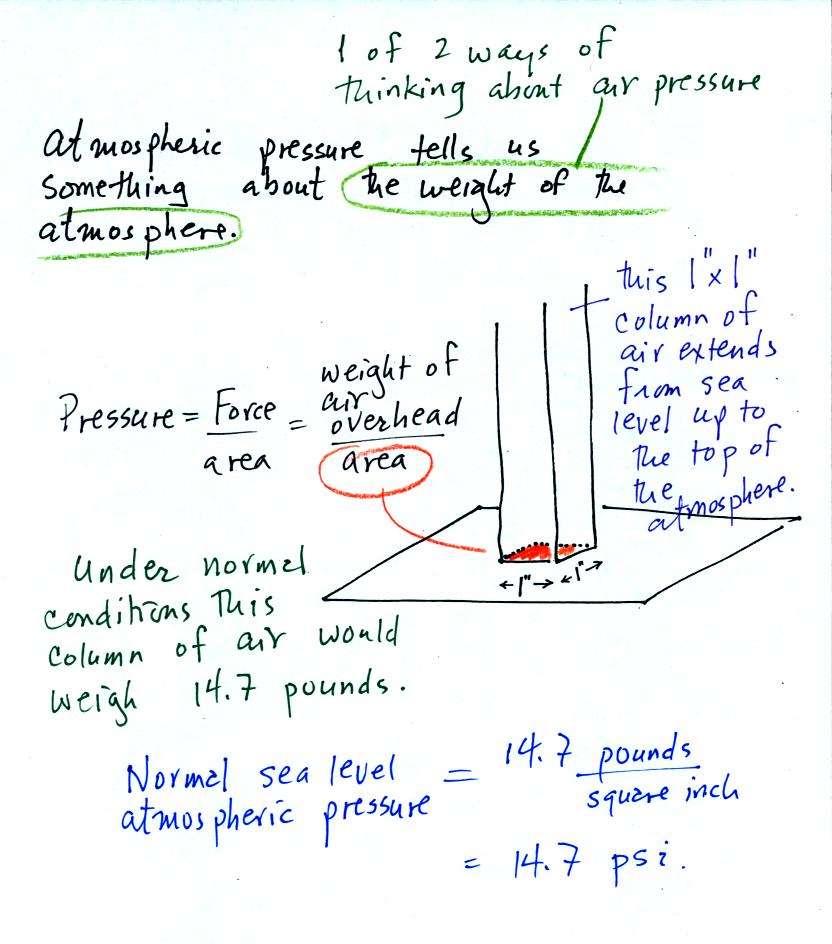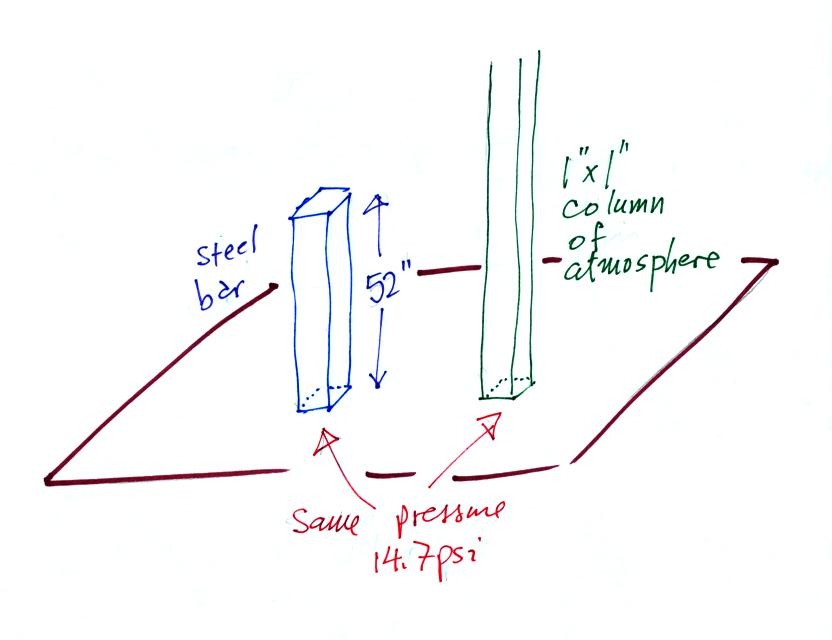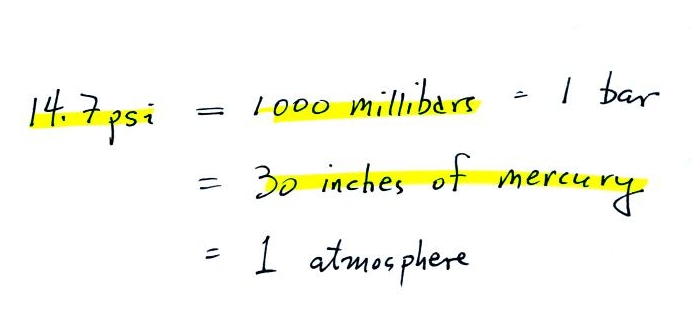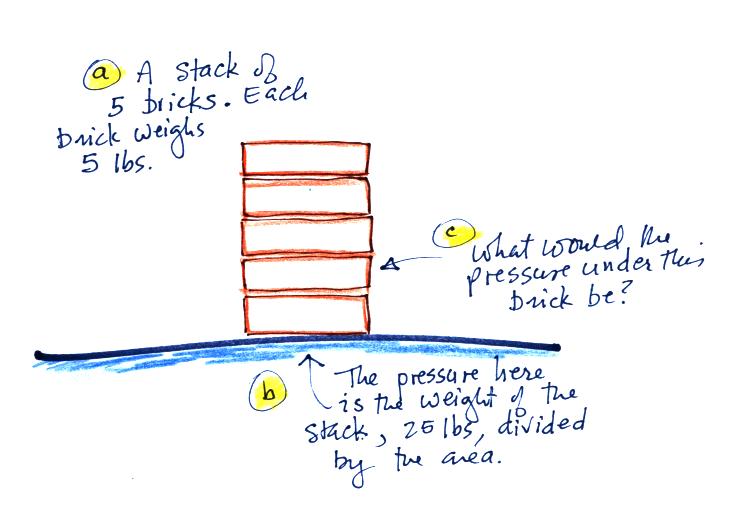Pressure is defined as force divided by area. Air
pressure is the
weight
of the atmosphere overhead divided by the area the air is resting
on.
Atmospheric pressure is
determined by and tells you something about the weight of the air
overhead. This is one way, a sort of large scale representation,
of understanding air pressure. At some point later in the
semester you'll learn about the ideal gas law which is a 2nd,
microscopic, way of understanding air pressure. (the figures
below differ somewhat from those drawn in class but emphasize the same
points)
Under normal conditions a 1 inch by 1 inch column of air
stretching
from sea level to the top of the atmosphere will weigh 14.7
pounds. Normal
atmospheric
pressure at sea level
is 14.7 pounds per square inch (psi, the units you use when you fill up
your
car
or
bike
tires
with air).
A steel bar was passed around in the classroom. The
steel
bar also weighs exactly 14.7 pounds (many
people think it is heavier than that). Steel is a lot denser
than air, so a steel bar only needs to be
52 inches tall to have the same weight as an air column that is 100
miles or more tall. If you were to stand the bar on end it would
push against the ground with a pressure of 14.7 psi.
Here are some of the other commonly used pressure
units.
Typical sea level
pressure is 14.7 psi or about 1000 millibars
(the
units used by meterologists and the units that you will use in this
class most of the time) or about 30 inches of mercury (refers to
the reading on a mercury barometer).
Pressure
at sea level is determined by the weight of the air overhead.
What happens to pressure as you move
upward in the atmosphere. We can use a pile of bricks to help
answer this question. I use bricks because you can see
them. You can think of the bricks representing layers of air in
the atmosphere.
Each brick
weighs 5 pounds. At the bottom of the 5 brick tall pile you would
measure a weight of 25 pounds. If you moved up a brick you would
measure a weight of 20 pounds, the weight of the four bricks still
above. To get the pressure you would need to divide by the
area. It should be clear that weight and pressure will decrease
as you move up the pile.
In the
atmosphere, pressure at any level is determined by
the weight of the air still overhead. Pressure decreases with
increasing altitude because there is less and less air remaining
overhead. The figure is a more
carefully drawn version of what was done in class.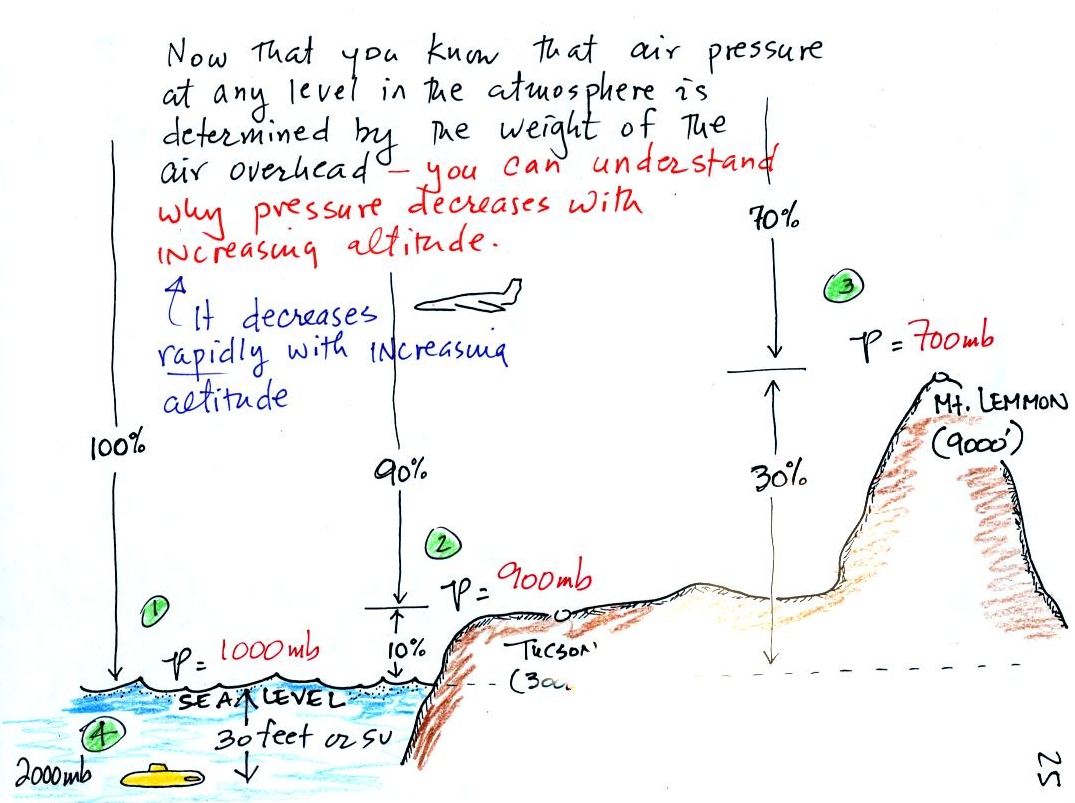
At sea
level altitude, at Point 1,
the pressure is normally about 1000 mb. That is determined by the
weight of all (100%) of the air in the atmosphere.
Some parts of Tucson, at Point 2, are 3000
feet above sea level (most
of the valley is a little lower than that around 2500 feet). At
3000 ft. about 10%
of the
air is
below, 90% is still overhead. It is the weight of the 90% that is
still above that determines the atmospheric pressure in Tucson.
If 100% of the atmosphere produces a pressure of 1000 mb, then 90% will
produce a pressure of 900 mb.
Pressure is typically about 700 mb at the
summit of Mt. Lemmon (9000
ft. altitude at Point 3) and
70% of the atmosphere is overhead..
Pressure decreases rapidly with increasing
altitude. We will find that pressure changes more slowly if you
move horizontally. But the small horizontal changes are what
cause the
wind to blow and what cause storms to form.
Point 4 wasn't
mentioned in class but shows
a
submarine
at
a
depth of
about 30 ft. The pressure
there is determined by the weight of the air and the weight of the
water overhead. Water is much denser and much heavier than
air. At 33 ft., the pressure is already twice what it would be at
the surface of the ocean (2000 mb instead of 1000 mb).
